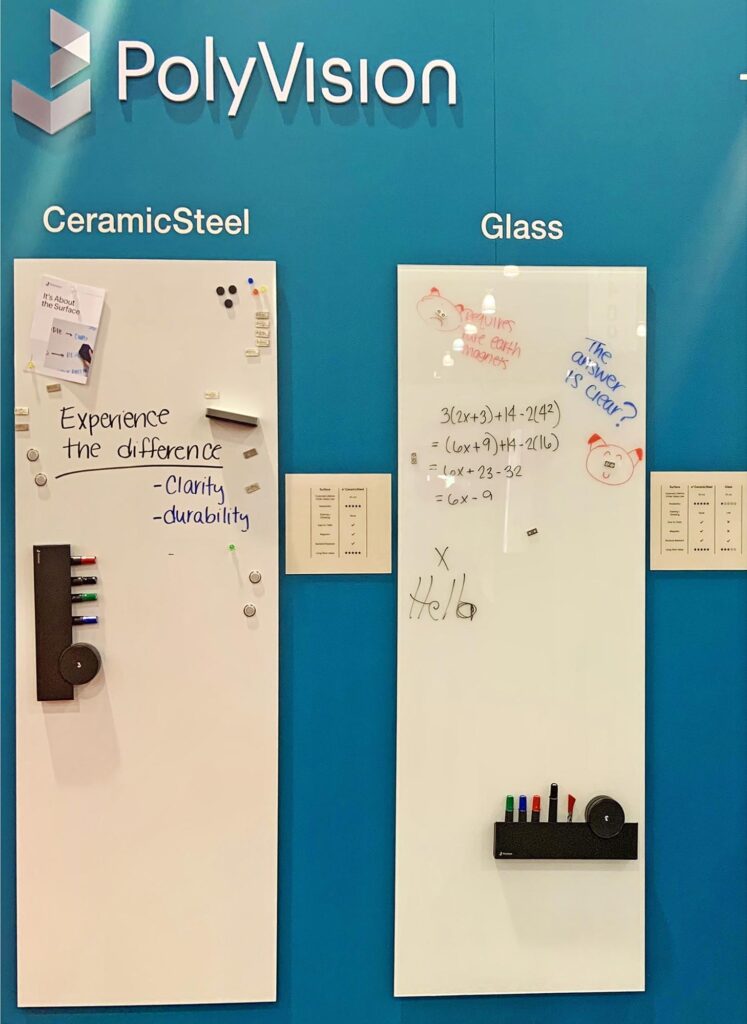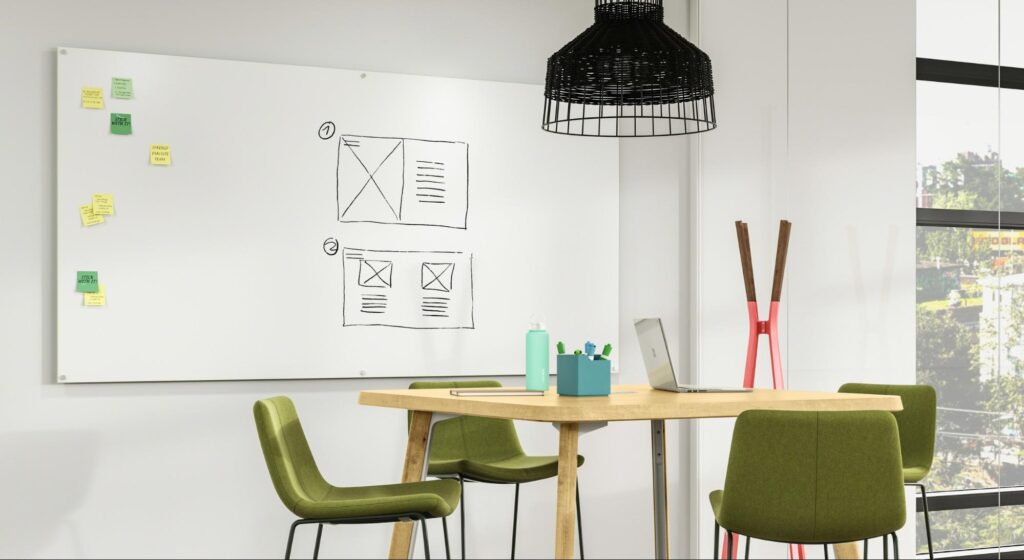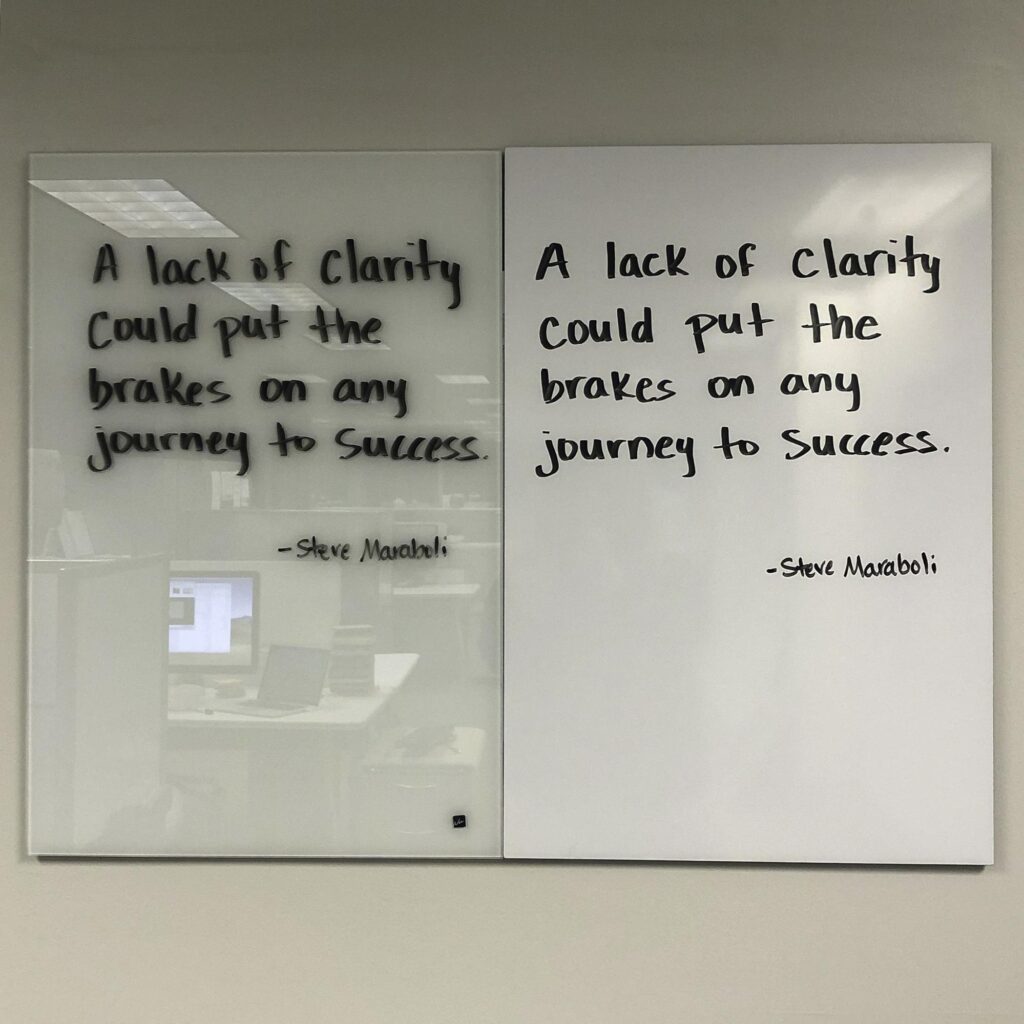We’ve discussed in detail the differences between CeramicSteel and other common whiteboard materials, but there is one surface we didn’t discuss in part two of our series: glassboards. In recent years, glassboards have seen a rise in popularity for their modern appearance and resistance to staining – both appealing qualities. These are also qualities offered by CeramicSteel. It’s a misconception that glassboards are entirely unique from CeramicSteel magnetic whiteboards or decorative dry erase boards.
While there are differences, there are just as many commonalities between the best features of CeramicSteel and glass.
Inorganic + Non-porous
Many don’t realize that the dry erase surface of CeramicSteel is glass in a different form. Glass granules called frits are melted down and fused to steel sheets to create CeramicSteel. The result is a much more durable writable wall surface that is lighter in weight and opaque in color for a strong contrast when writing. Another benefit is the thin layer of ceramic fused to steel. Because the surface is thin, it’s easy for magnets to penetrate, creating a functional surface with strong magnetic capabilities. On the other hand, while some glassboards are designed to be magnetic, they require rare-earth magnets to be functional. This is because the thickness required for glassboards to be safe is greater than a standard magnet can penetrate.
Both glassboards and CeramicSteel are non-porous surfaces. This prevents penetration of the surface by inks, which is why neither CeramicSteel nor glassboards will stain or ghost. They won’t absorb the color from markers, leaving it on the smooth surface ready to erase. A tip for users, though. Some markers, like low-odor dry erase markers, will leave behind a greasy residue on glass and CeramicSteel whiteboards. This causes marker ink to build up over time, but it’s not staining or ghosting. It’s a sign that your surface needs to be cleaned with a simple solution of rubbing alcohol and water.
Chemical + Bacteria Resistance
Thanks to the non-porous and inorganic nature of both CeramicSteel and glassboards, they are both resistant to bacteria. These surfaces won’t harbor bacteria or provide an environment conducive to growth. Not only that, they’re both easy to clean. Glass may scratch with use from certain corrosive cleaners, but CeramicSteel is more durable, the integrity of the surface guaranteed to remain intact over the years of heavy use and cleaning. Knowing that your dry erase surface won’t harbor or spread germs in the classroom or healthcare facility where students and patients are susceptible provides a little more peace of mind.
Fire Resistance
Polyvision’s CeramicSteel is classified as incombustible and scores the best fire behavior rating (A1). This means that in the event of a fire, CeramicSteel will not catch fire generating additional heat or sustained flaming. Much like CeramicSteel, most glassboards are fire resistant. Dependent upon the substrate and mounting used for the respective surfaces, neither CeramicSteel nor glassboards will combust and spread fire.
Modern Aesthetics
Glassboards are often sought after solely for their aesthetic appeal. The clean, modern lines and high-end look provide something special for corporate offices, higher education spaces and specialty medical practices. CeramicSteel is commonly lumped together with other “traditional whiteboards” brought to mind from your 5th grade classroom, but that isn’t the limit of CeramicSteel’s design capabilities. With limitless possibilities from full-wall writing solutionsto customized frameless boards, the design variety for CeramicSteel writing surfaces is expansive.
Creating a designer look with your writing surface isn’t just about the surface itself, but also about what it looks like when in use. Glassboards have a higher gloss, and many users find the glare uncomfortable after time. Additionally, the distance between the transparent surface and colored background creates a drop-shadow effect that can make writing appear blurred and unclear. This isn’t ideal for education, corporate or healthcare settings where information needs to be clearly communicated.


